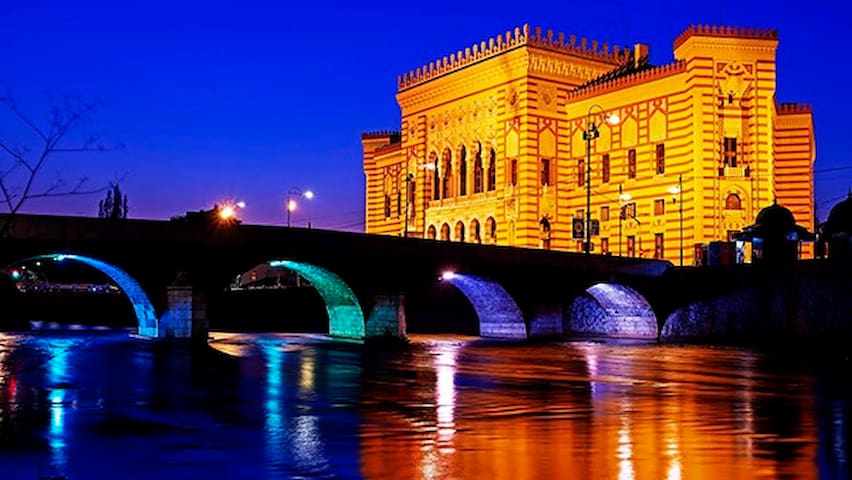Razgledavanje
The most significant Sarajevo landmark and the most beautiful building in Sarajevo. It is within walking distance from accomodation.
181 當地人推薦
Sarajevo City Hall
1 Obala Kulina banaThe most significant Sarajevo landmark and the most beautiful building in Sarajevo. It is within walking distance from accomodation.
Latin bridge, site of the Archduke Franz Ferdinand's assination. He was assasinated by Gavrilo Princip, member of the Sarajevo organization "Crna ruka" (Black Hand) an anti-austrian movement. Event that triggered World War One.
98 當地人推薦
拉丁橋
bb Obala Kulina banaLatin bridge, site of the Archduke Franz Ferdinand's assination. He was assasinated by Gavrilo Princip, member of the Sarajevo organization "Crna ruka" (Black Hand) an anti-austrian movement. Event that triggered World War One.
Sarajevska žičara
bb HrvatinSarajevo cable car to Trebević mountain. Beautiful view of Sarajevo.
Very big, old and beautiful mosque built in the center of Baščaršija in 1530. Bey’s Mosque was designed by Adžem Esir Ali, a Persian from Tabriz, who was the chief architect in the Ottoman Empire at that time. The mosque was built as part of a vakuf (endowment) established by the Ottoman Governor, Gazi Husrev Bey, who governed Bosnia, more or less continuously, from 1521 until his death in 1541.
Today, this mosque is rightly seen as the most important architectural monument from the time of Ottoman rule in Bosnia and Herzegovina.
There are many Bosnian leaders buried in the mosque’s courtyard, including Reis-ul-Ulema, Mehmed Džemaludin Čaušević; the politician, Dr. Mehmed Spaho; the reformer, Ali Bey Firdus; the poet, Safvet Bey Bašagić....
164 當地人推薦
加齊·胡斯雷夫貝伊清真寺
8 SaračiVery big, old and beautiful mosque built in the center of Baščaršija in 1530. Bey’s Mosque was designed by Adžem Esir Ali, a Persian from Tabriz, who was the chief architect in the Ottoman Empire at that time. The mosque was built as part of a vakuf (endowment) established by the Ottoman Governor, Gazi Husrev Bey, who governed Bosnia, more or less continuously, from 1521 until his death in 1541.
Today, this mosque is rightly seen as the most important architectural monument from the time of Ottoman rule in Bosnia and Herzegovina.
There are many Bosnian leaders buried in the mosque’s courtyard, including Reis-ul-Ulema, Mehmed Džemaludin Čaušević; the politician, Dr. Mehmed Spaho; the reformer, Ali Bey Firdus; the poet, Safvet Bey Bašagić....


